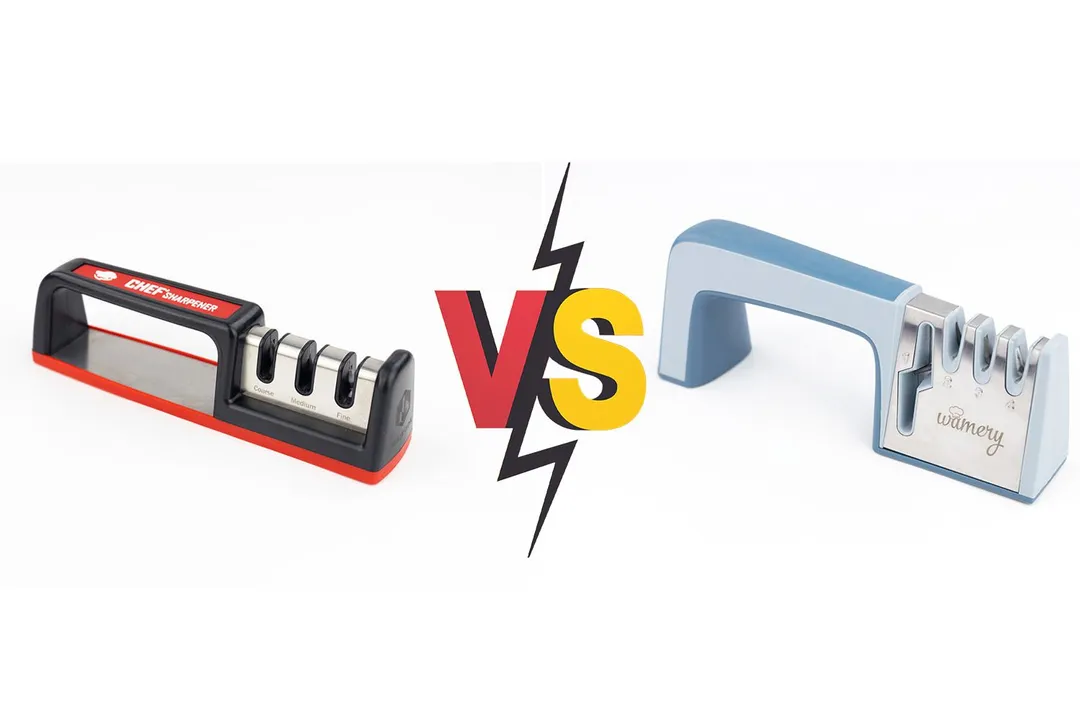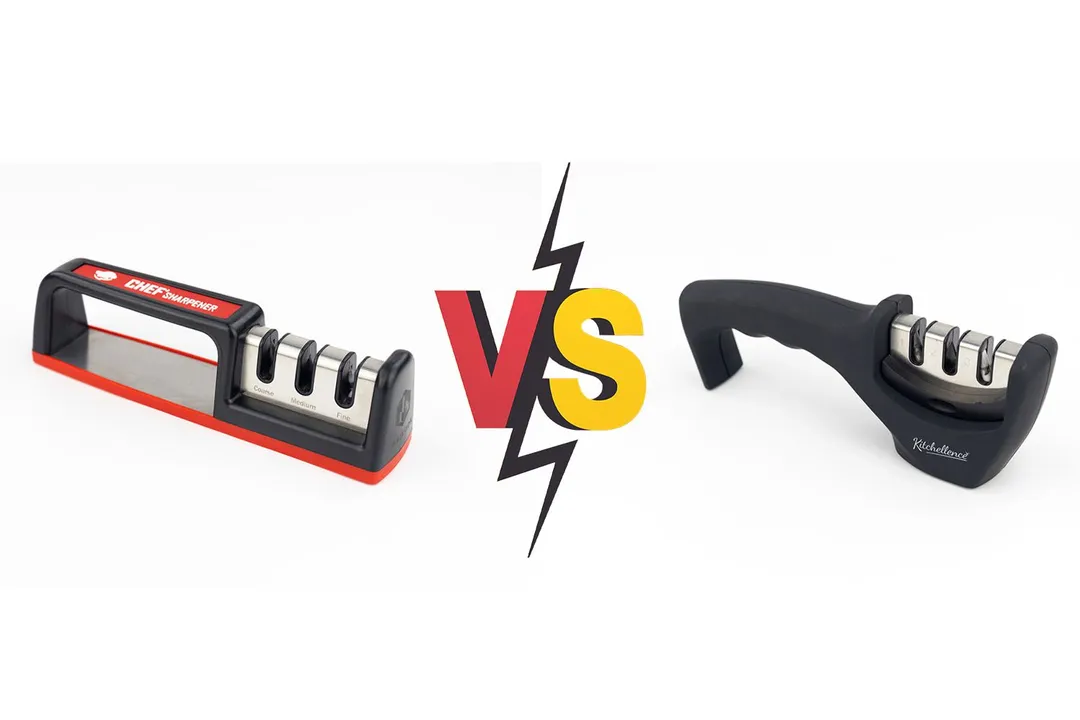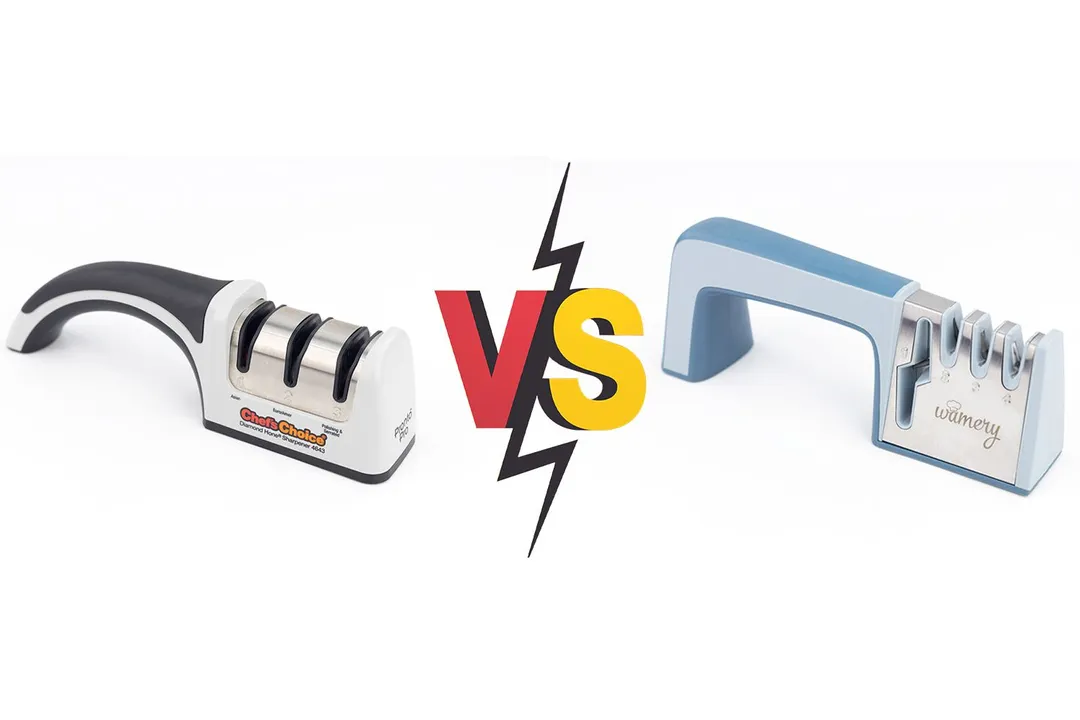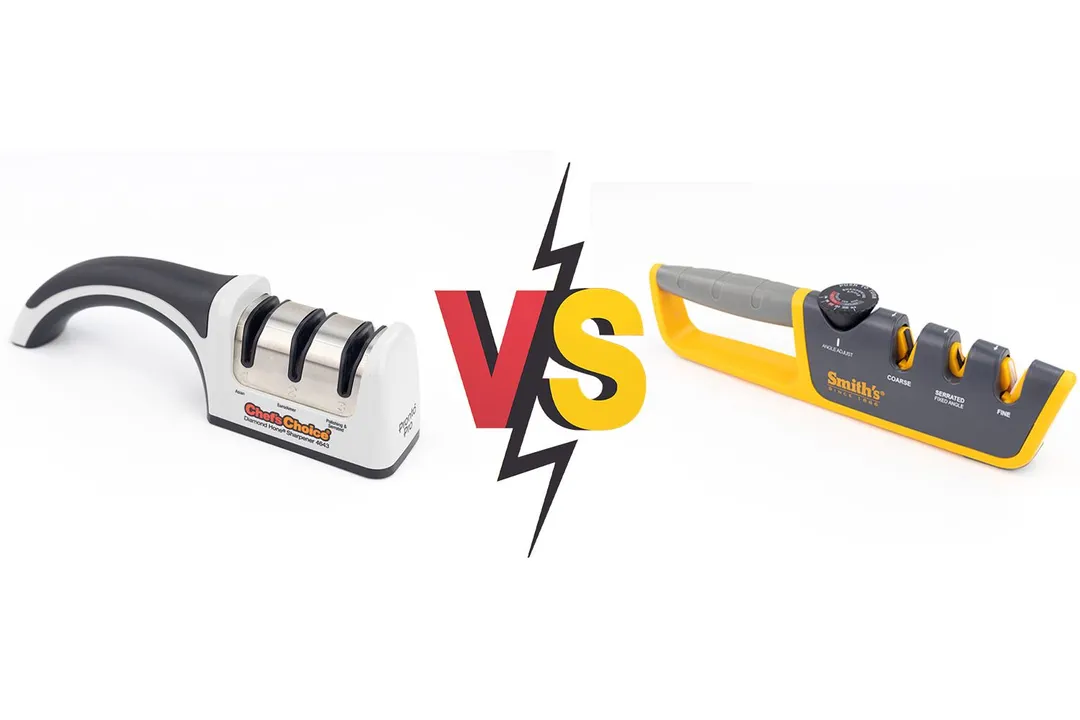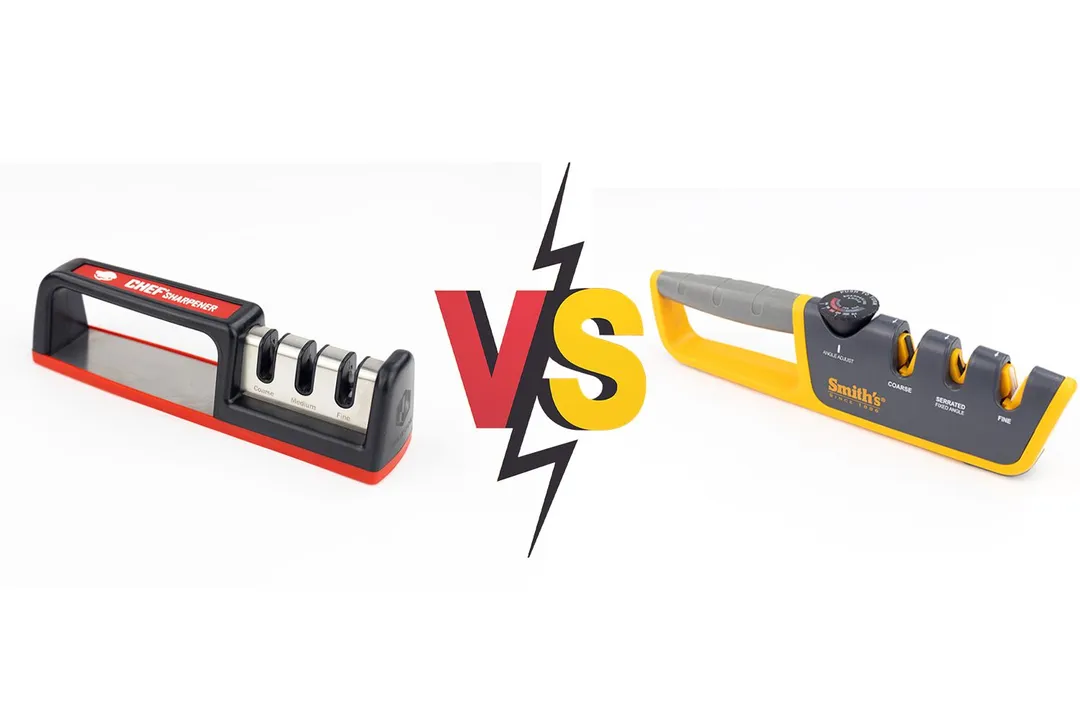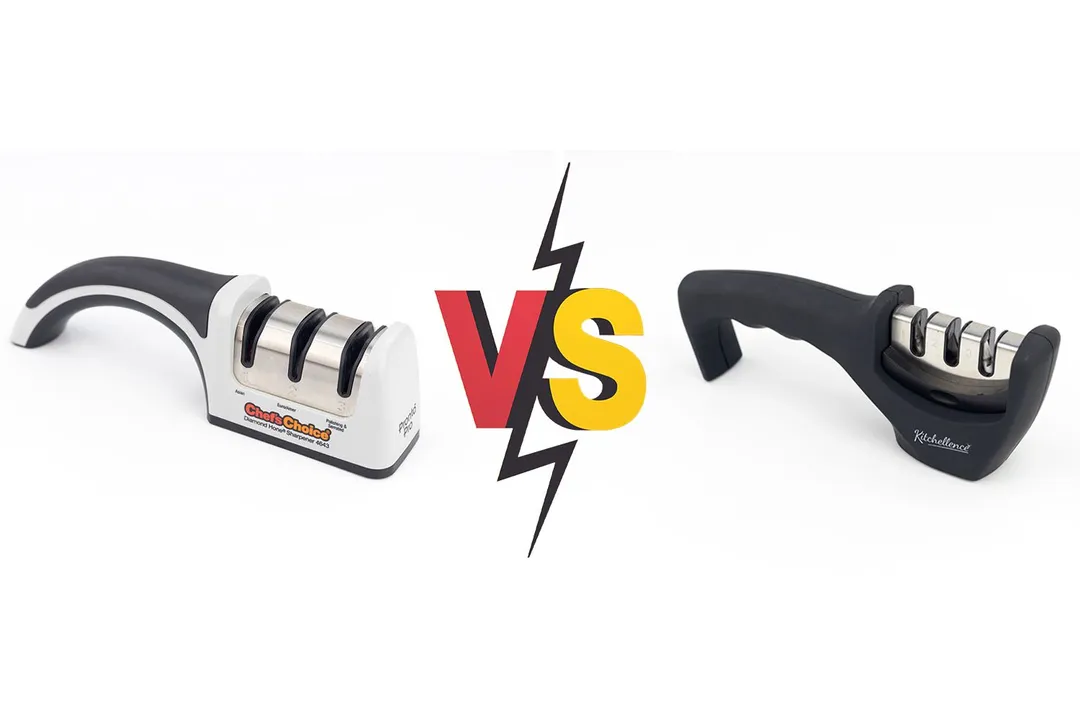Our recommendations are made independently through Research & Testing. We may receive commissions from purchases made via our links.
Cubikook Manual vs Chef'sChoice 4643 Manual Side-by-Side Comparison
The Chef’sChoice has a great design but its rating is far behind the Cubikook. Check how they compare.
Cubikook CS-T01
Tested Using Methodology v1.1Chef's Choice 4643
Tested Using Methodology v1.1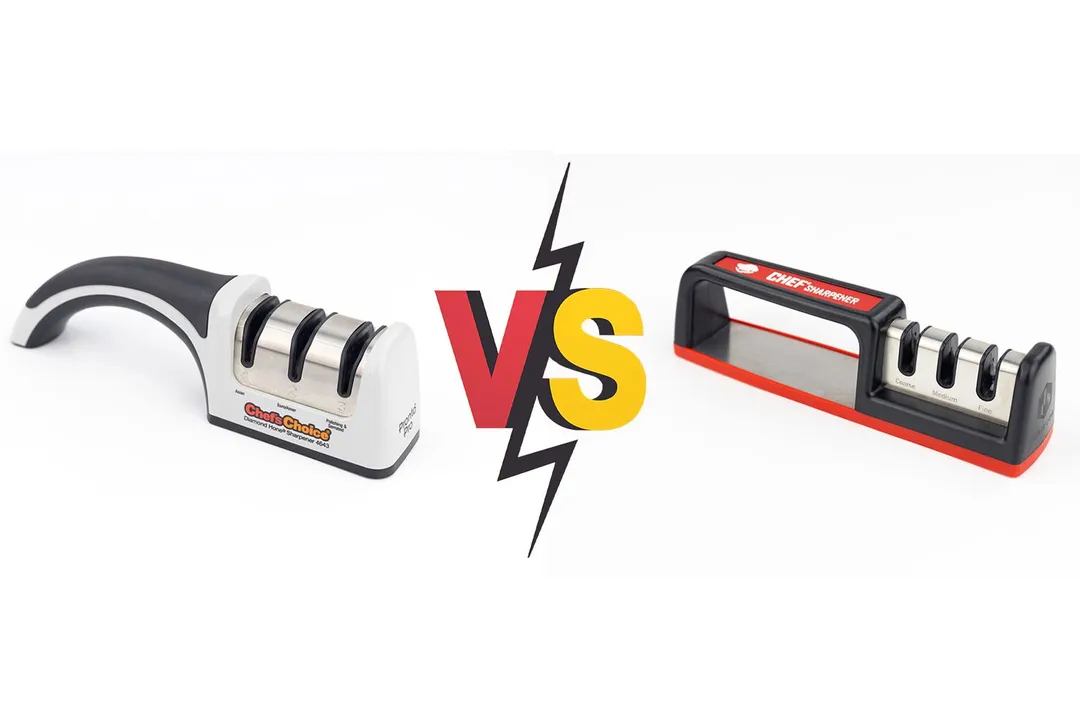
Overall Verdict
At first glance, the Chef’sChoice 4643 and the Cubikook are both decent pull-through sharpeners. But when it’s time to sharpen a dull knife, the Cubikook CS-T01 wins by a mile.
Both devices feature a strong construction and a flat base that offers excellent stability. We prefer the Chef’sChoice’s ergonomic grip and minimalist base design, though its duo-angle working section can be a little confusing for first-time users. The Cubikook has a more straightforward slot layout; on the other hand, its small grip with a flaky label leaves much to be desired.
Performance-wise, the Cubikook is hands down the winner. It’s faster, sharpens to a keener level, and creates a smoother edge while removing less material from the blade. In fact, it’s one of the most effective among all the manual devices we’ve tested. The Chef’sChoice 4643’s subpar performance is simply no match.
Pros & Cons
- Excellent stability
- Affordable price
- Consistent sharpness
- Solid and sturdy construction
- Works with 20° and 15° edges
- Compatible with serrated blades
- Grippy handle
- Neat, ergonomic overall design
- Small ceramic rods
- Flaky brand label
- Expensive price
- Awkward slot layout
Key Specs
Where to Buy
*You help support HealthyKitchen101's product testing and reviews by purchasing from our retail partners.
Analysis and Test Results
Performance
Sharpening Time to Cut a Lemon
Material Retention
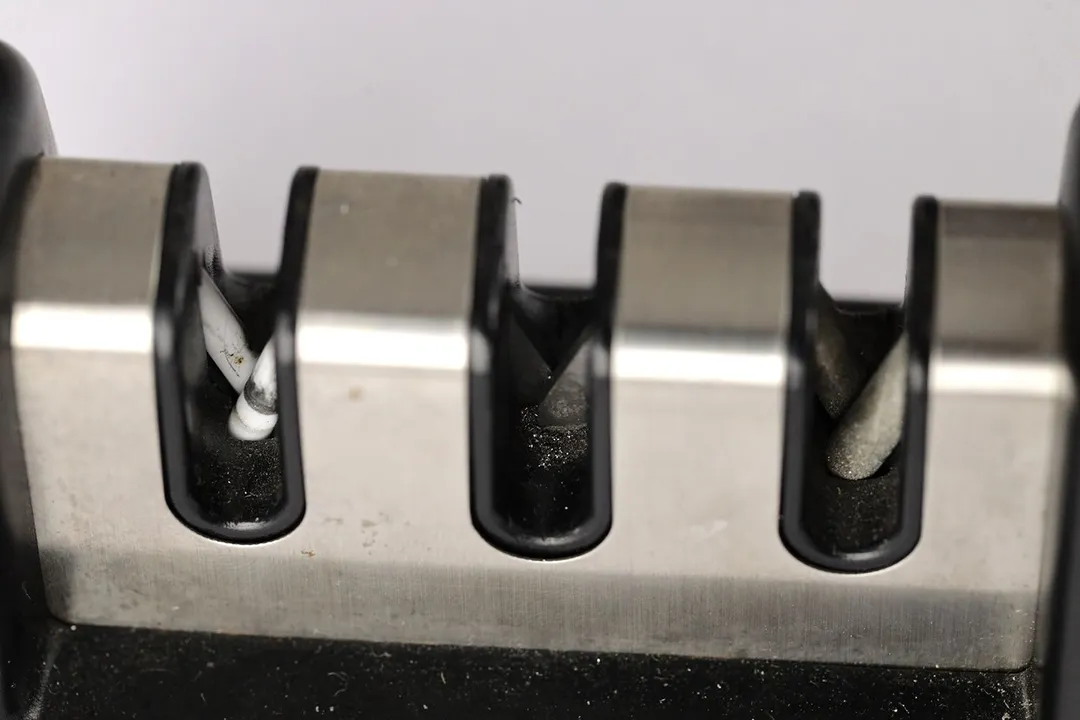
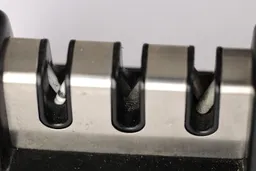

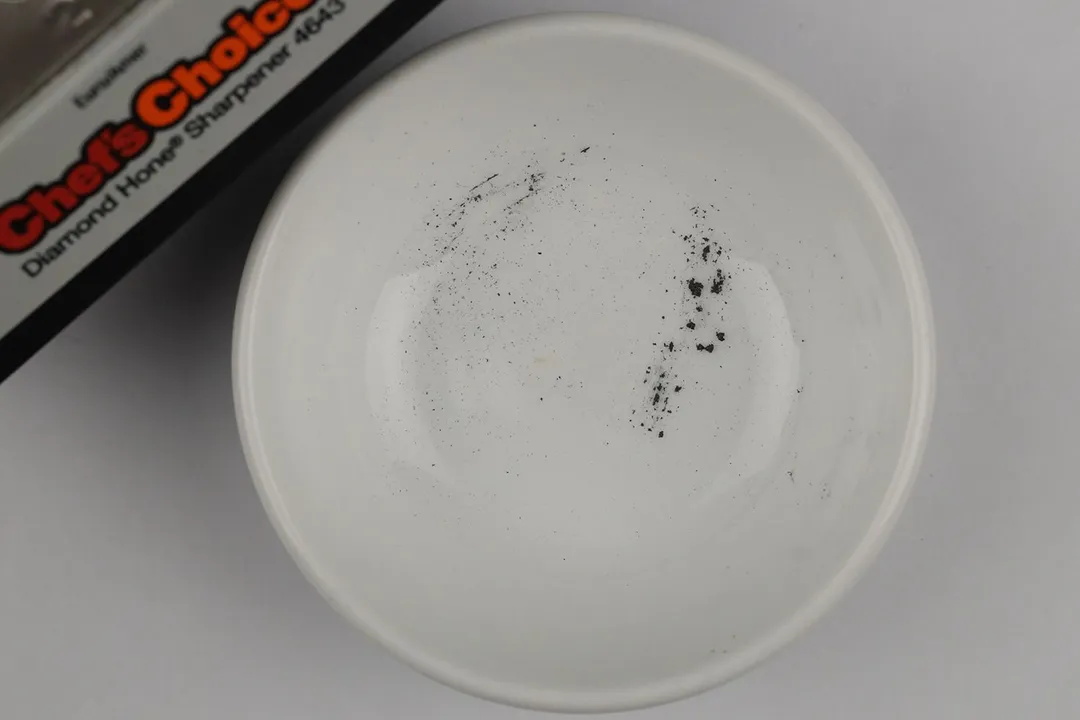
Maximum Sharpness Achieved
Edge Smoothness

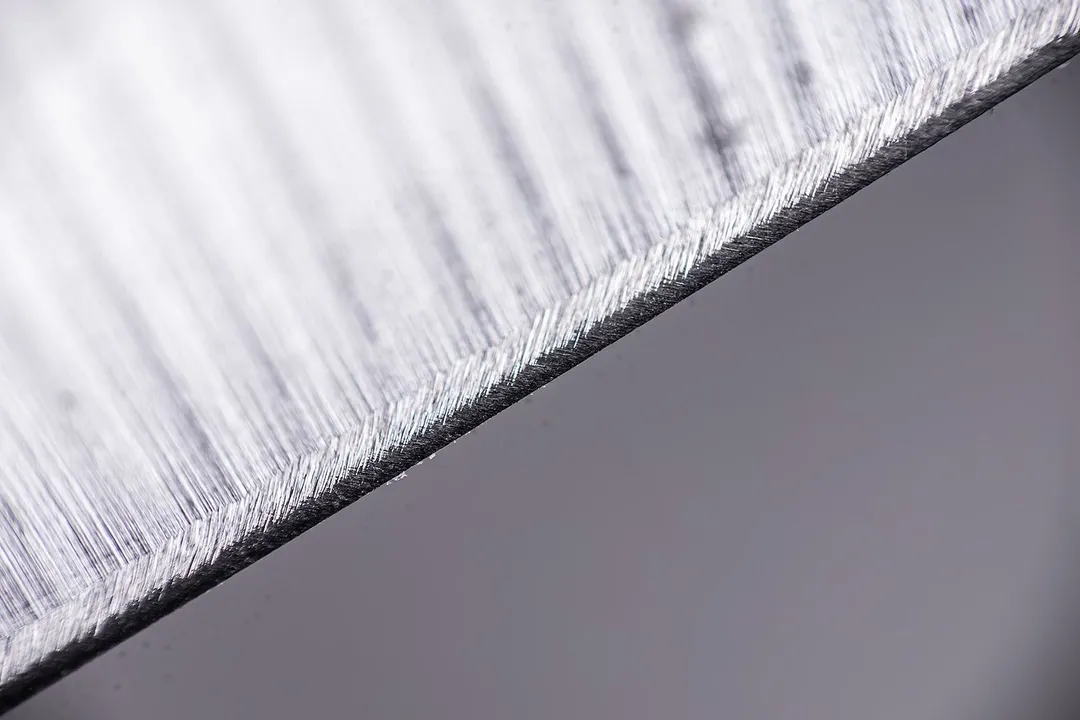
Design
In the Box
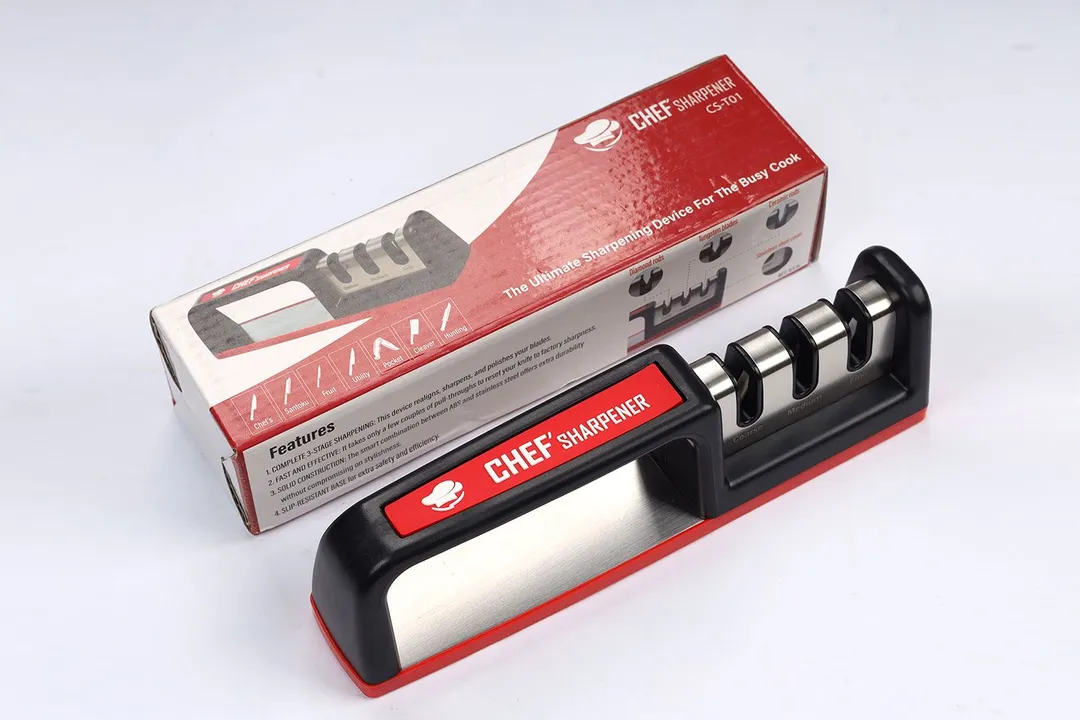
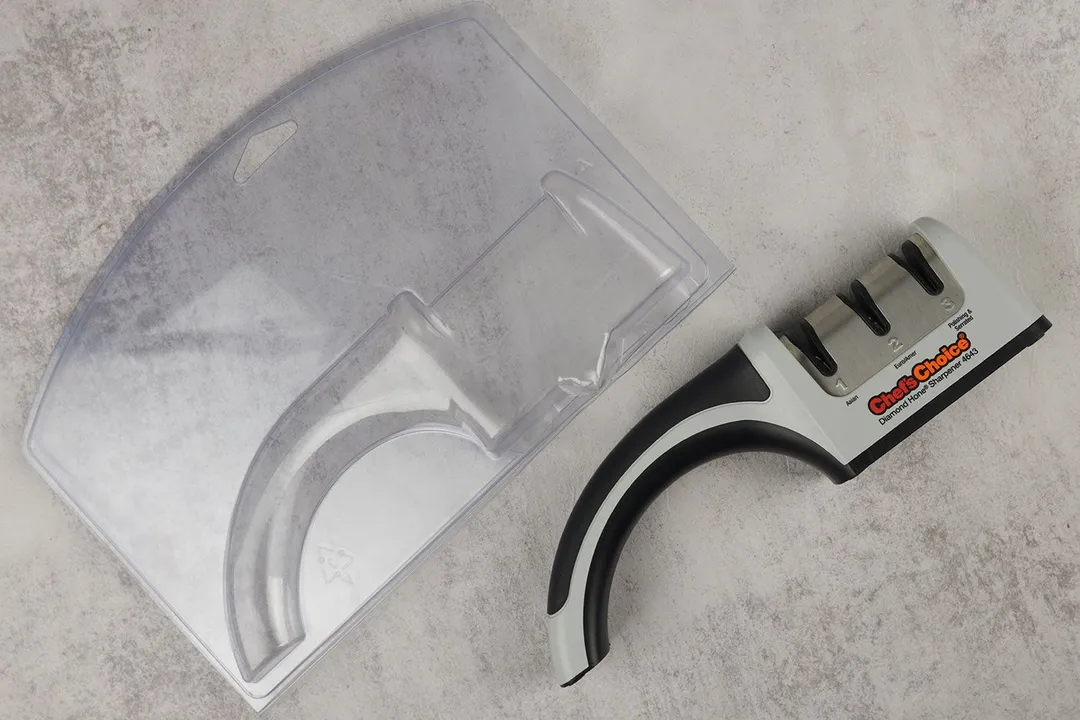
Dimensions
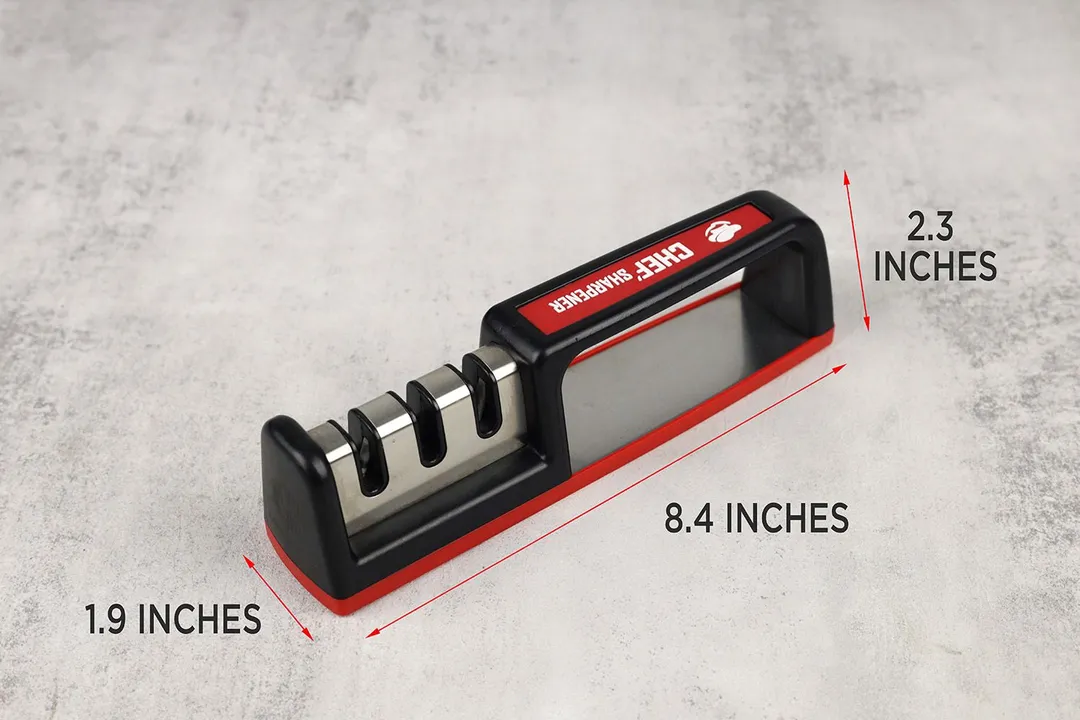
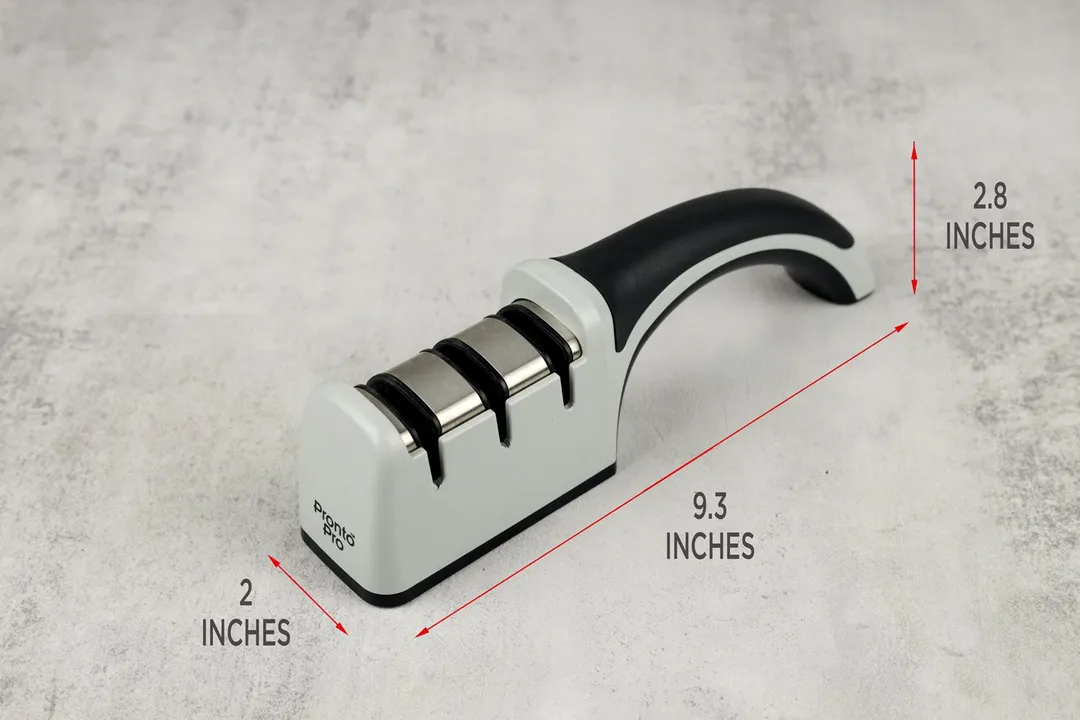
Build Quality
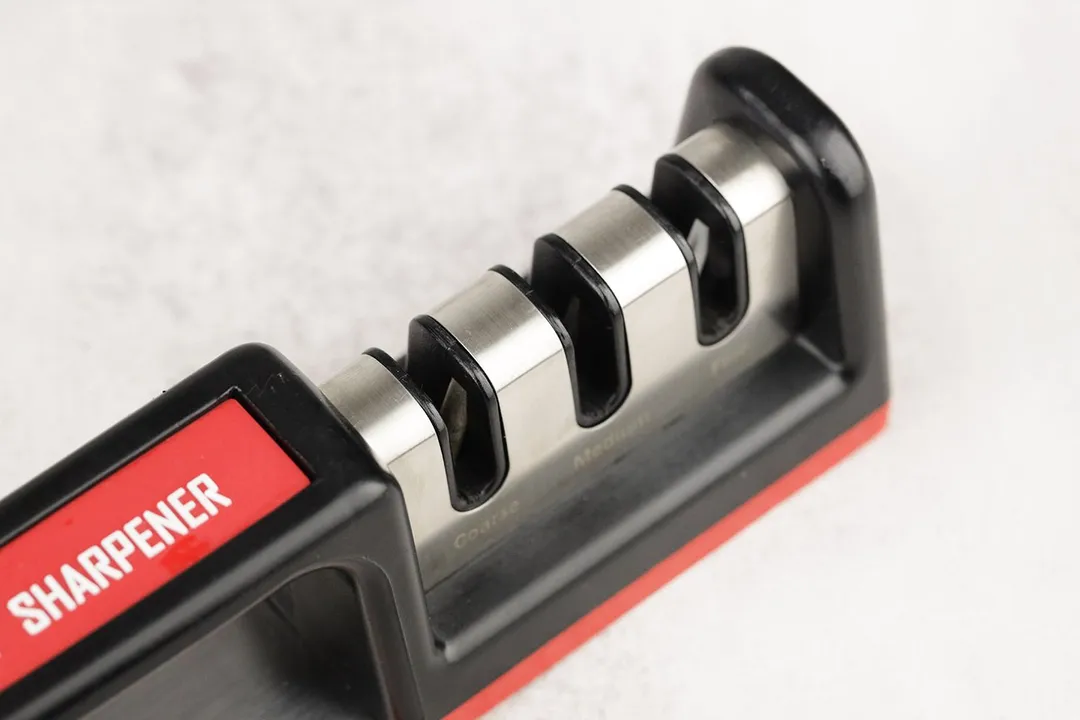
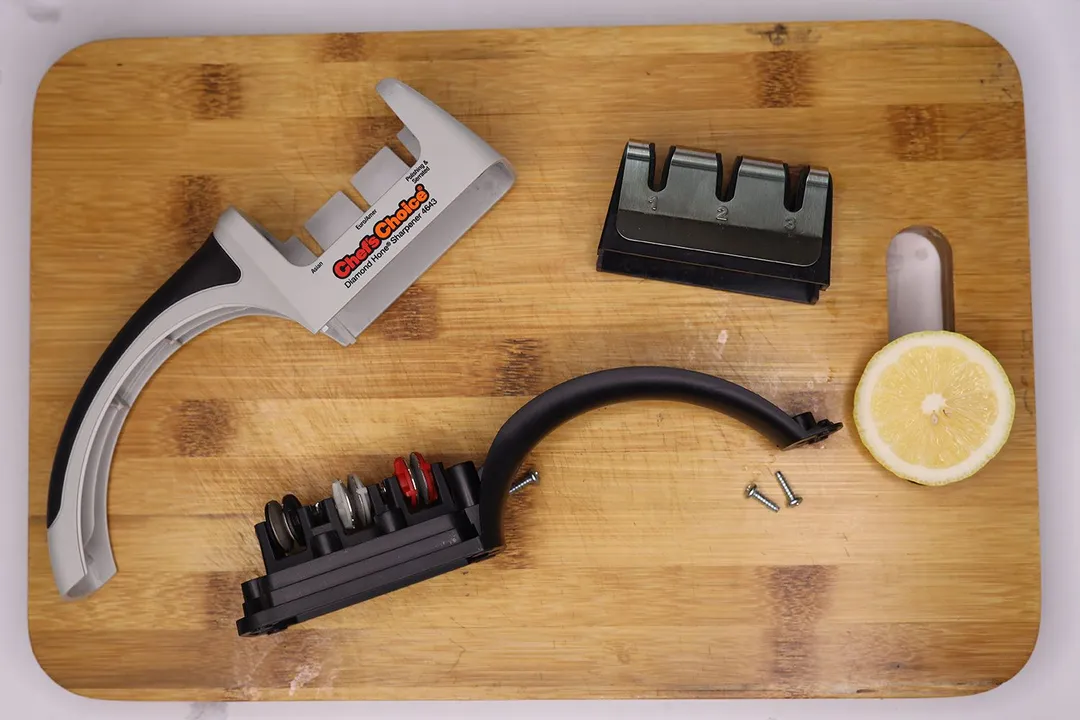
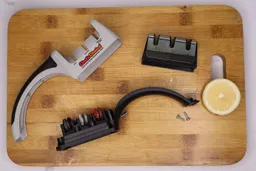
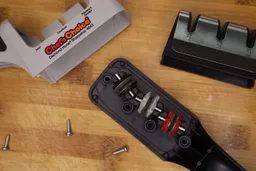
Working Section
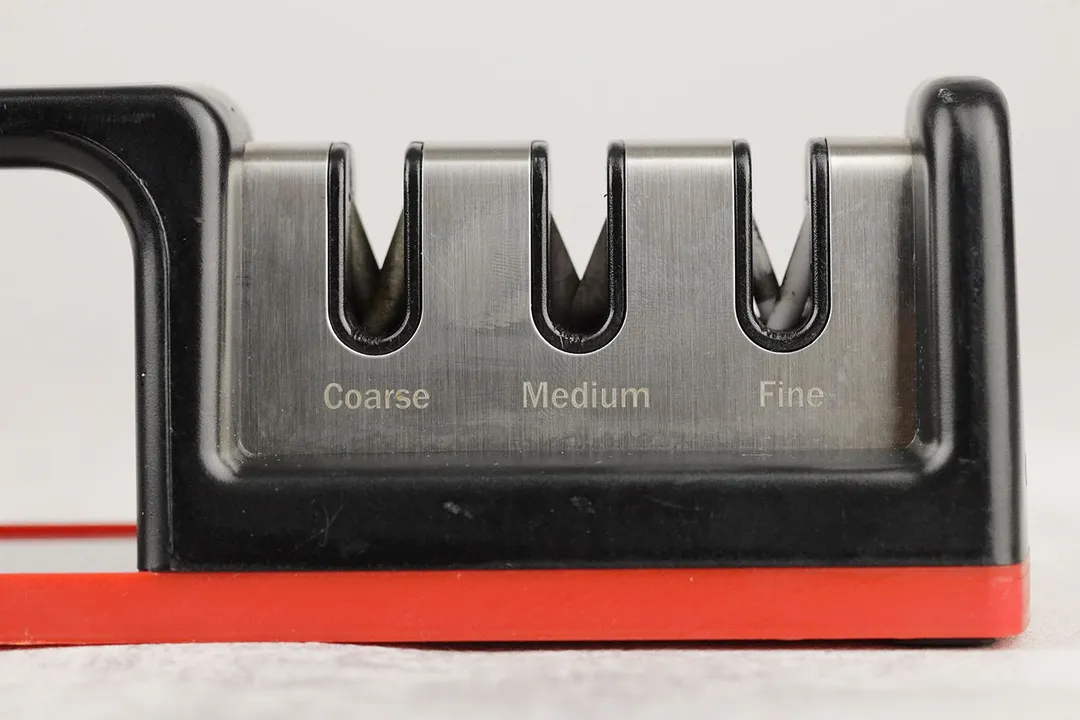
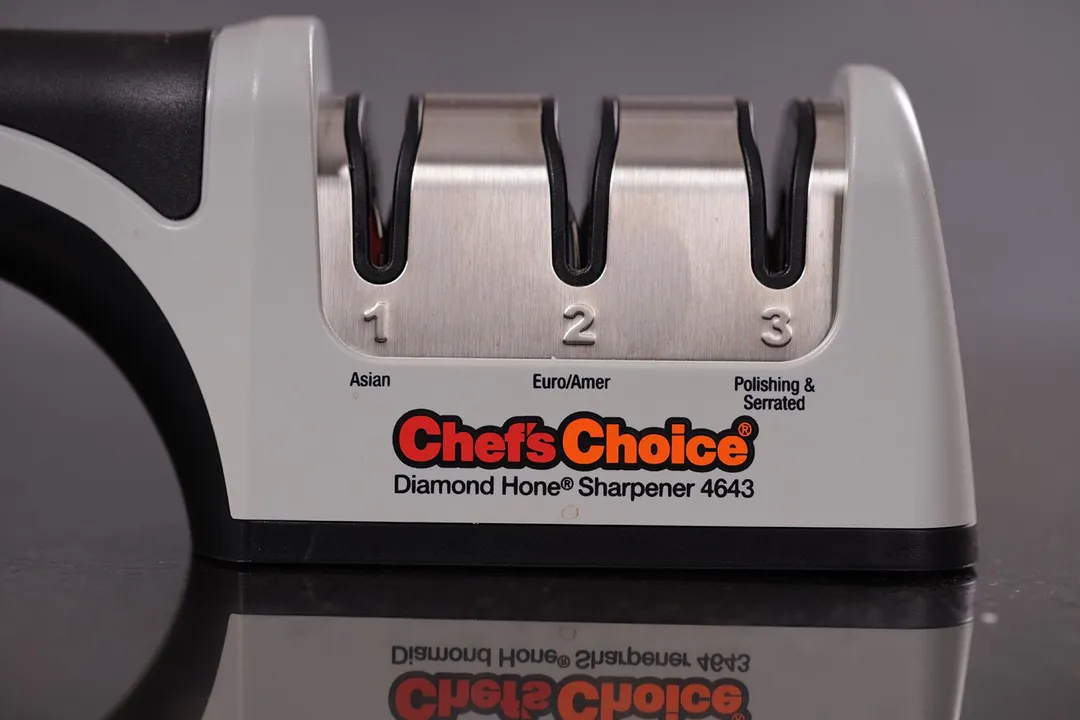
Base

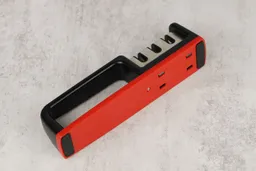
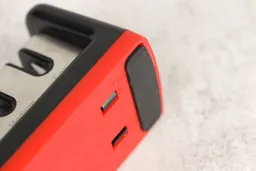

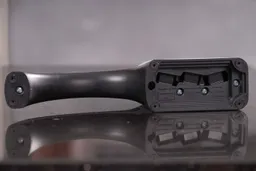
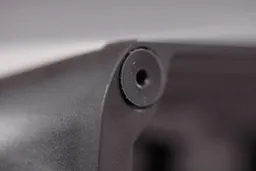
Grip
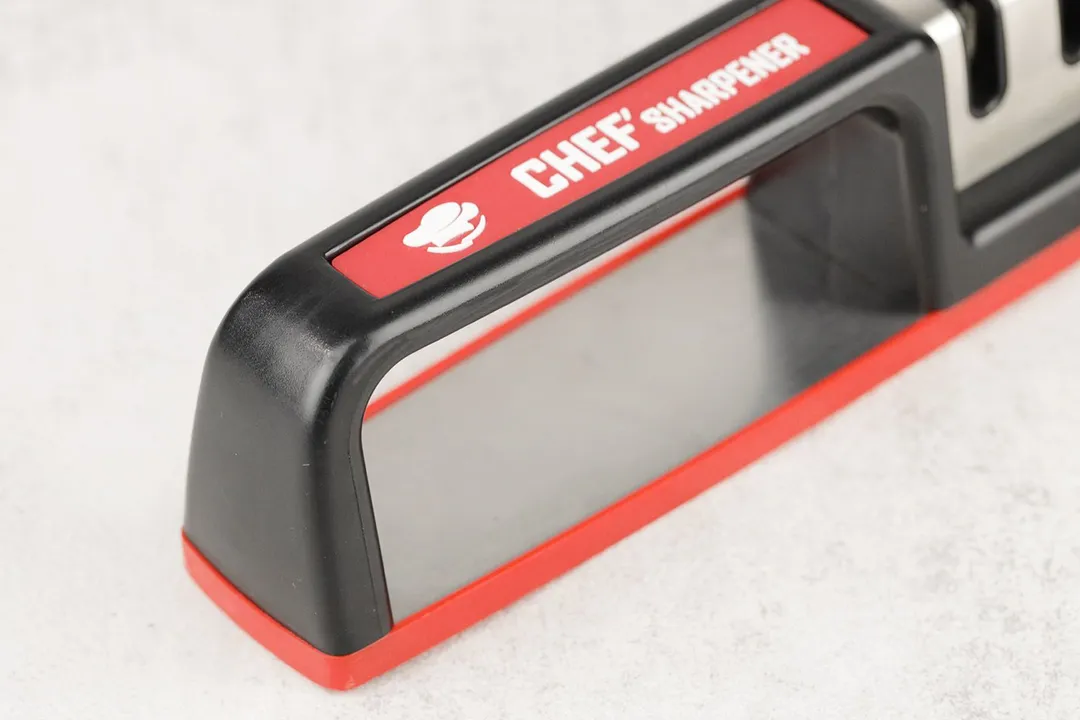

Usability
Slot Arrangement
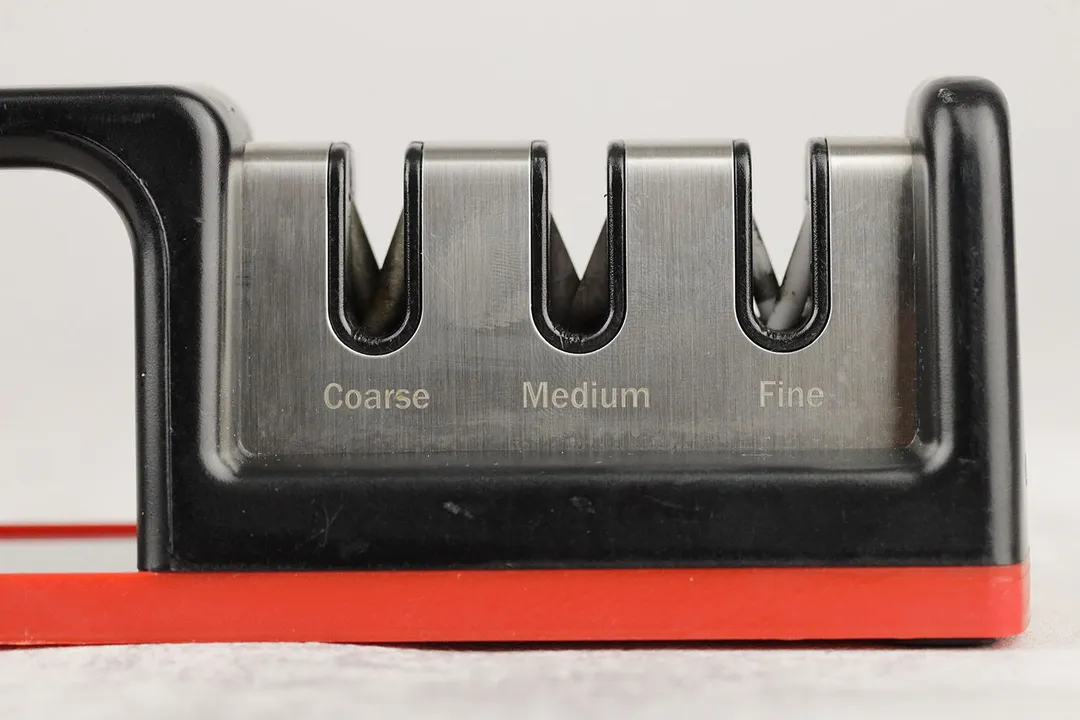
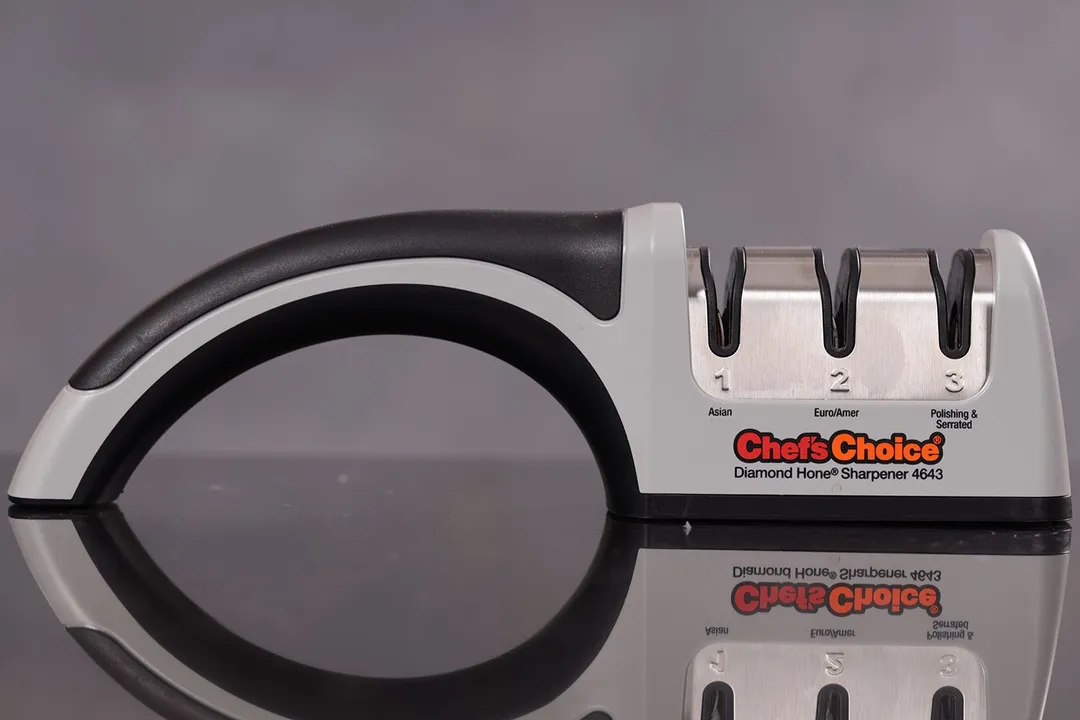
Insertion
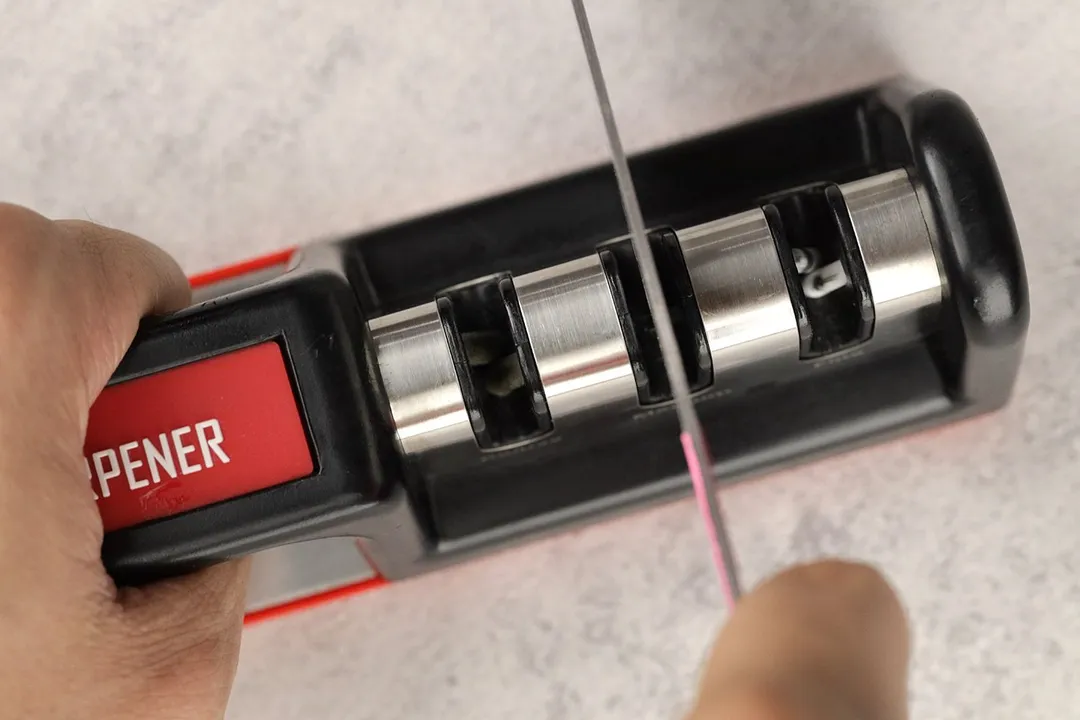

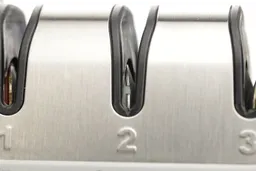
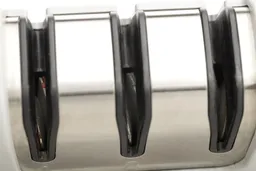
Pulling Through
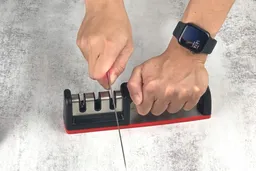
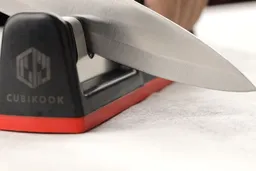
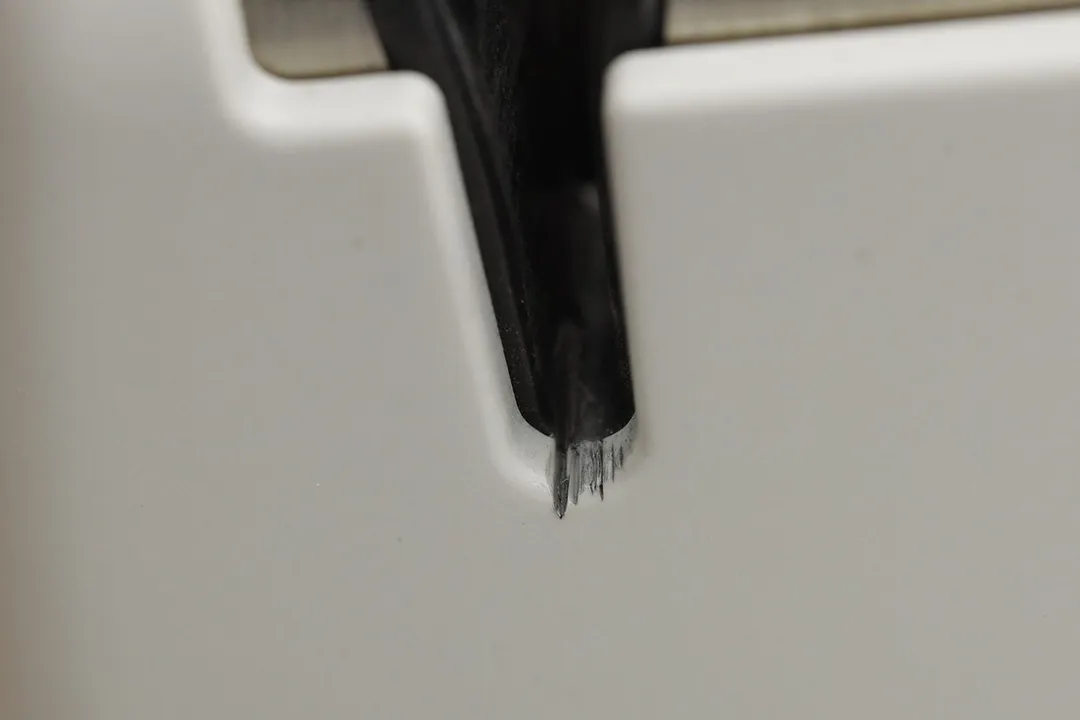
Stability on a Clean Surface
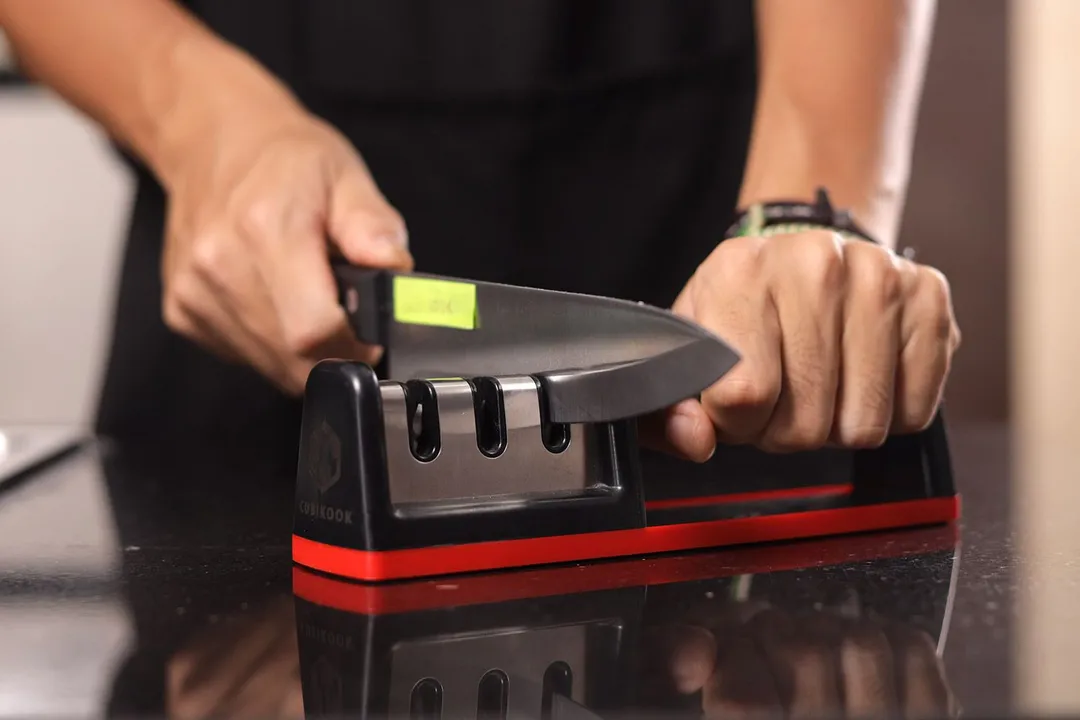
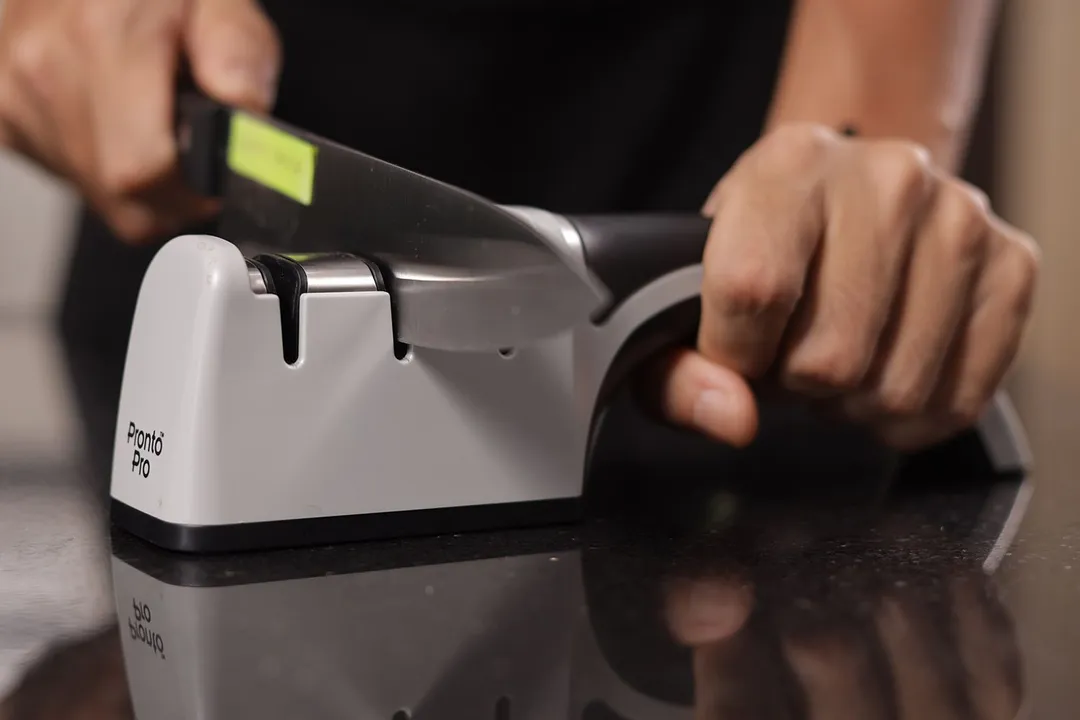
Stability on a Wet and Dirty Surface
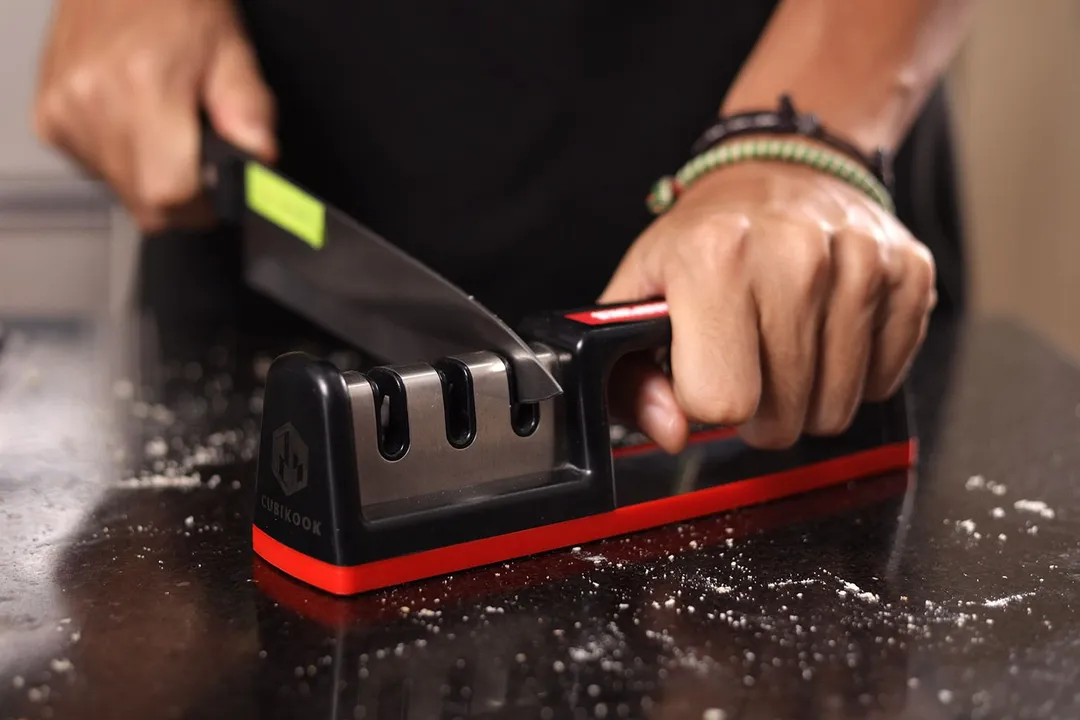
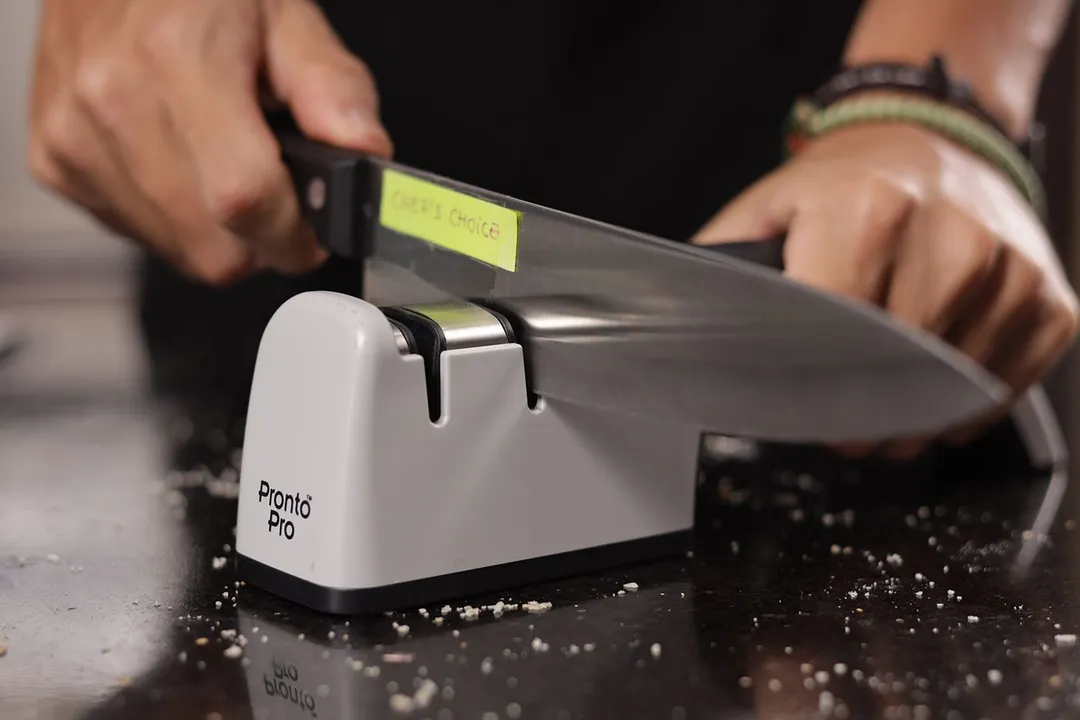
Behind the Comparison
Anh Ngo is a writer with 9 years experience at different media outlets, covering from public news and events to product testing and analysis. At HealthyKitchen101, she works across different departments, communicating closely with its network of writers, editors, and health, tech, and search engine experts to provide a meaningful and pleasant reading experience for visitors.
Lap is Head of the Research, Testing, and Review Team (RTR Team) at HealthyKitchen101.com, where he directs and supervises the testing of kitchen gadgets and appliances.
Nguyen Ntk is a graphic designer, photographer, and videographer whose philosophy centers around respecting and celebrating the beauty of reality. Through his lenses, Nguyen strives to capture the true essence of objects and events, showcasing and highlighting authentic features without distortion or exaggeration.



